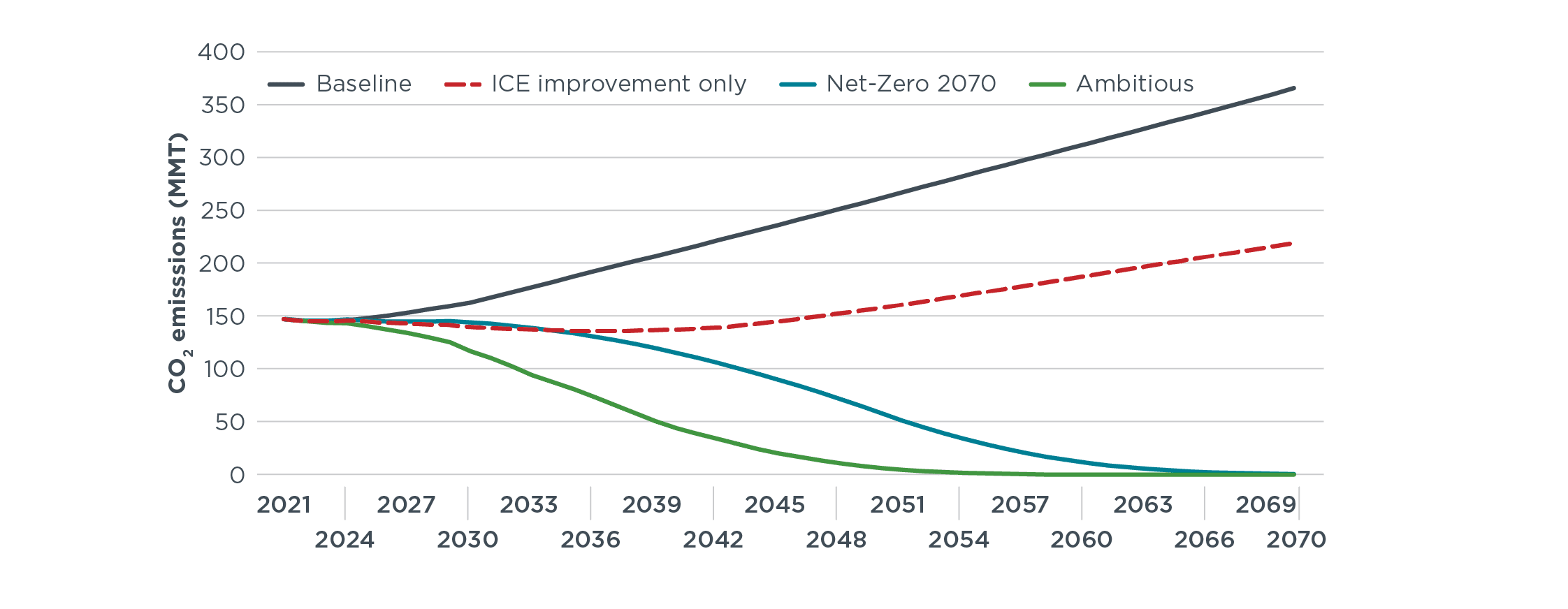Working Paper
Assessing the scale of zero-emission truck deployment required for meeting India’s net-zero goal
India has committed to reduce the carbon emissions intensity of its GDP by 45% by 2030 and to achieve net-zero emissions by 2070. Reducing heavy-duty truck emissions, which are a large and growing source of overall transport emissions, will be essential to meeting these goals. This paper assesses the rate of zero-emission truck (ZET) adoption necessary for India to meet its 2030 and 2070 climate targets. Considering various policy and market scenarios, it examines the impact of ZET penetration on the total fleet’s tank-to-wheel and well-to-wheel CO2 emissions. As India seeks to expand its production and use of green hydrogen, this paper also analyzes the impact of grey and green hydrogen uses on fleet-wide emissions.

Figure 10. TTW CO2 emissions from the HDT segment
This paper finds that for India to achieve its 2070 net-zero target would require 100% ZET penetration by 2050. A more ambitious scenario, which would keep India below the 2 °C warming limit set out in the Paris Agreement, would necessitate ZET uptake of 30% by 2030 and 100% by 2045. Grid decarbonization and green hydrogen use will also be critical to India’s emissions-reduction outlook. Overall, accelerating ZET adoption would contribute significantly to India’s economy wide emissions reduction aims.
